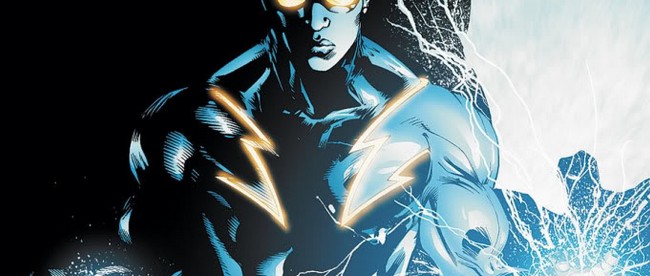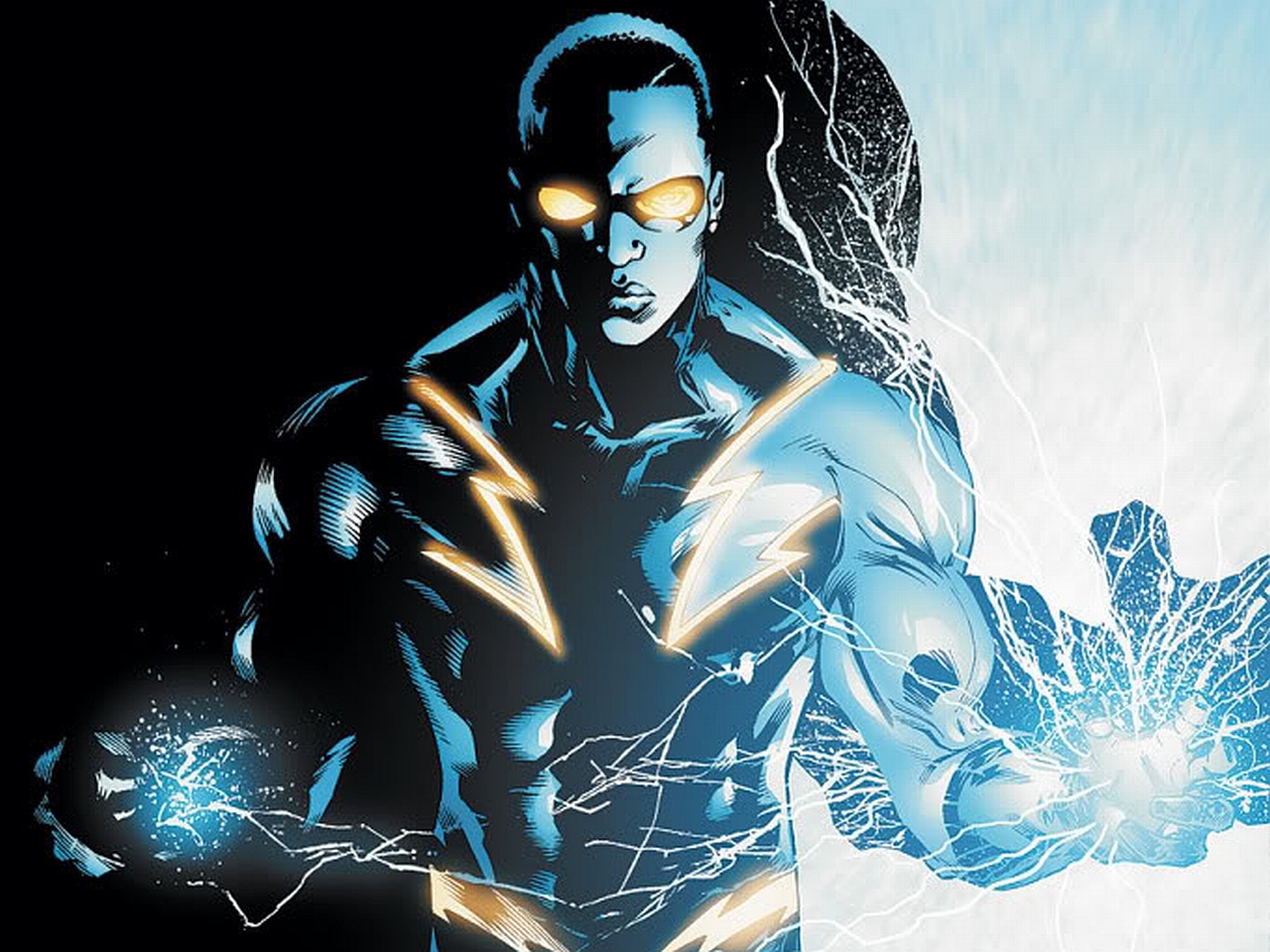The Racist Super Hero Who Never Made It

Superman, Batman, Spider-Man, Iron Man, Thor, Daredevil, even Aquaman. All superheroes. All dudes. All white, too. If you had to name a female superhero, you’d go with Wonder Woman most likely — maybe Supergirl or Jessica Jones, or maybe one of the X-Men (if you think of Mutants as superheroes, but let’s not bother with that debate right now). Naming an African-American one can prove difficult — one of the Green Lanterns or maybe Luke Cage?
Or maybe Black Lightning, pictured below.

If you’re really tuned into the world of comics, you may have heard the name Black Lightning recently — as recently as yesterday, there were rumors of the character getting his own TV show in the near future. Black Lightning as a pretty cool back story which may make for good television. Per the DC comic database, he “was a high school principal and Olympic-level athlete who became a vigilante to take down organized crime” using his super powers — “the ability to generate and control lightning.”
But he almost didn’t exist.
Black Lightning joined the comic book universe in 1977 as part of DC’s ensemble, becoming the first African-American character to headline a DC comic. DC’s main competitor, Marvel, had already broken the color barrier five years earlier, though, when Luke Cage (probably best known now because of the Netflix series) became the first black protagonist of an eponymous comic in 1972.
With five years to plan, you’d think DC would get it right the first time, but they came very close to screwing it up — big time. The first creative pass at a black character was one called the Black Bomber, and he wasn’t a teacher nor could he control lightning. In fact, he wasn’t even black, at least not always. According to the book “Black Superheroes, Milestone Comics, and Their Fans,” the Black Bomber “was actually a bigoted white Vietnam veteran who had undergone war-time experiments that would cause him to turn into a black hero during times of stress.” (The available sources do not describe his super powers.) And it got worse. According to Tony Isabella, one of the creators of Luke Cage, the Bomber didn’t transform quietly (via):
In each of the two completed Black Bomber scripts, the white bigot risks his own life to save another person whom he can’t see clearly (in one case, a baby in a stroller) and then reacts in racial slur disgust when he discovers that he risked his life to save a black person. He wasn’t aware that he had two identities, but each identity had a girlfriend and the ladies were aware of the change. To add final insult, the Bomber’s costume was little more than a glorified basketball uniform.
The scripts, though, never made it into comic book form. The reason Isabella knows about the above is because DC knew that there was something amiss about the character and brought Isabella in to fix it. Isabella, to his immense credit, convinced DC to scrap the racist race-changer and go with his idea for a lightning-controlling, always-black teacher instead.
Bonus fact: It’s really hard to make it as a female superhero, too. Take Wonder Woman for example. The character dates back to 1941 but, unlike Batman, Superman, Spider-Man, and dozens of others, she didn’t make it into the movies until recently. Her movie debut came in 2014, but not in the way you think: her first time on the big screen was in the LEGO movie. (Don’t worry, she’s getting more screen time: In June of 2017, the first Wonder Woman-titled movie will hit theaters and in 2016’s Batman vs. Superman, the character made her first live-action theatrical debut.)
From the Archives: Action Comics: The time Superman went rated-R. Also, Air Plane: When nothing became a Wonder Woman collectible.
Related: Black Lightning #1.
